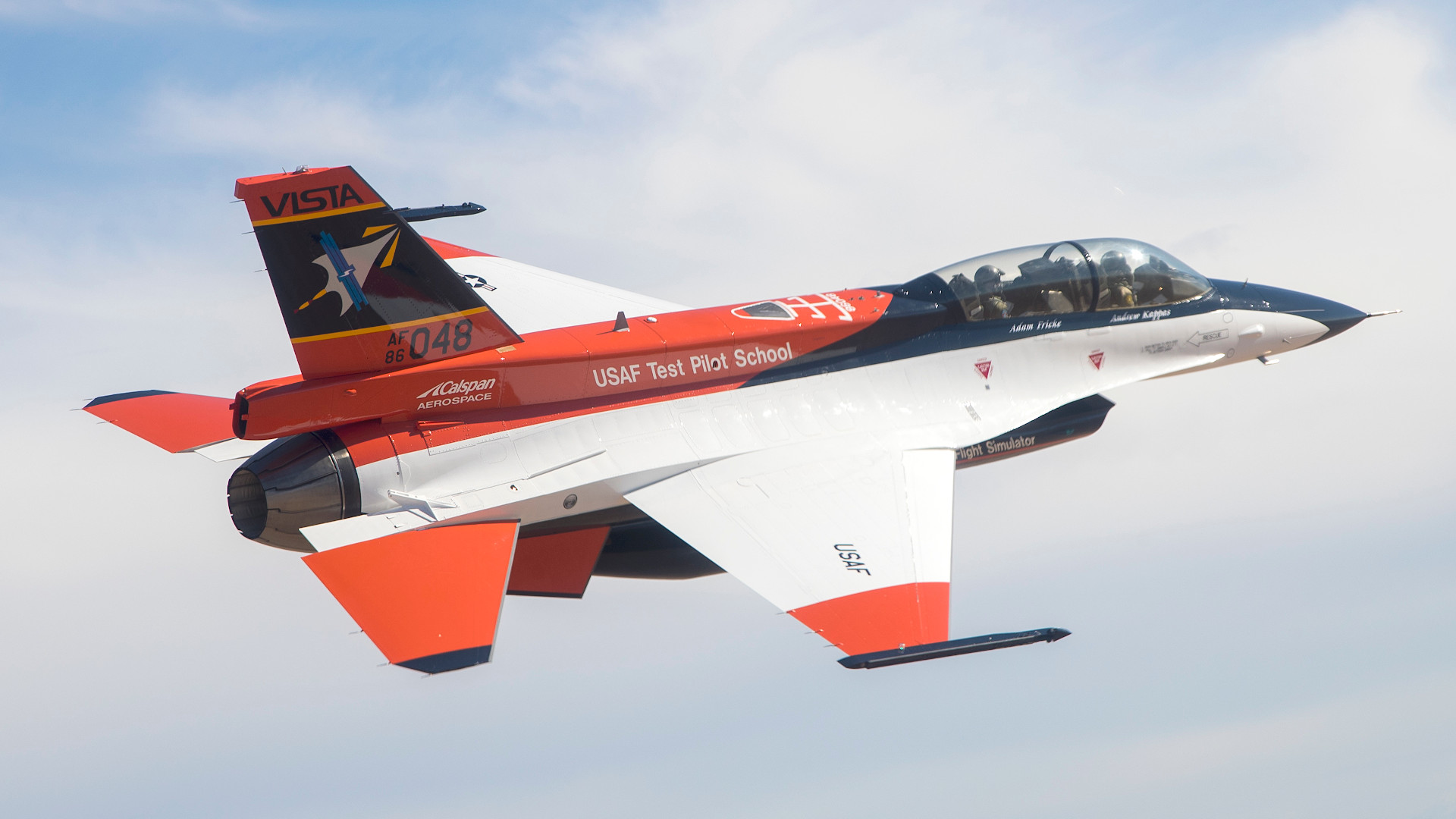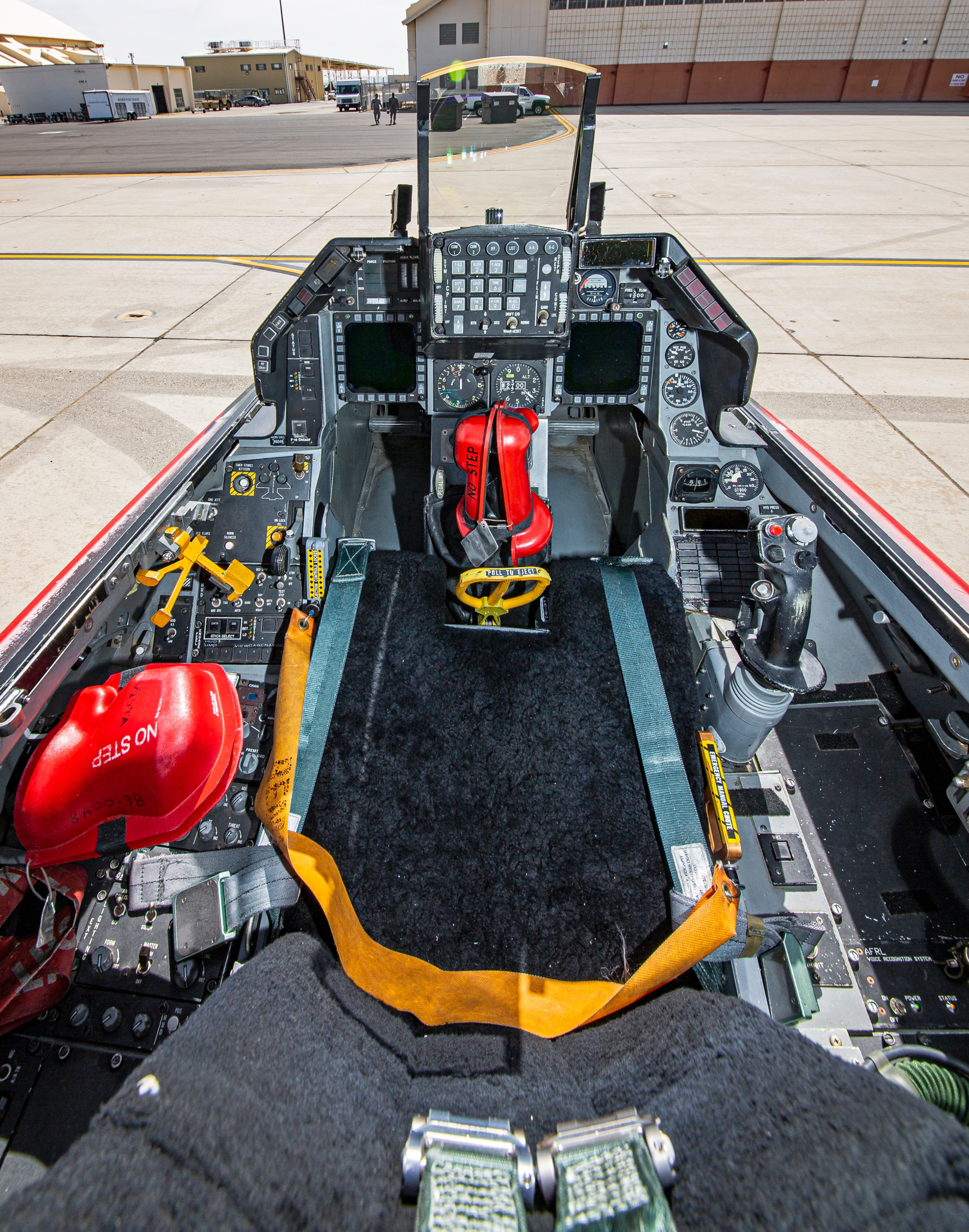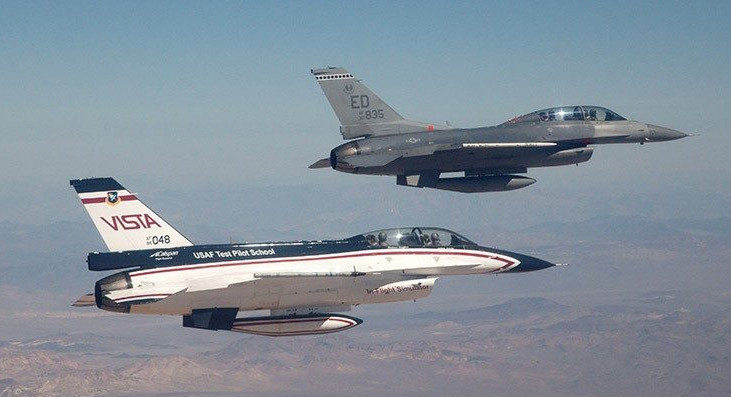The U.S. Air Force has redesignated its NF-16D Variable-stability In-flight Simulator Test Aircraft, or VISTA, as the X-62A. This new X-plane nomenclature, something typically applied to purely experimental aircraft and other aerospace vehicles, is meant to better reflect this aircraft’s current role as a multi-purpose test platform as the service prepares to make new modifications to it so that it can support the Skyborg program. Skyborg is focused on developing a suite of artificial intelligence-driven technologies and associated systems that will together form a “computer brain” able to fly “loyal wingman” type drones and potentially migrate to other designs, including fully autonomous unmanned combat air vehicles, or UCAVs.
The public affairs office for the 412th Test Wing at Edwards Air Force Base in California announced the designation change on Friday, July 30th. The Air Force Test Pilot School at Edwards, in cooperation with Calspan, operates the VISTA jet. This highly modified, one-of-a-kind F-16D Viper fighter is also now part of a newly created Research Division within the Test Pilot School.

“The VISTA is currently in the midst of an upgrade program which will fully replace the VISTA Simulation System (VSS),” according to the Air Force. “The upgrade program will also add a new system called the System for Autonomous Control of Simulation (SACS) to support autonomy testing for the Air Force Research Laboratory’s Skyborg program.”
“The redesignation reflects the research done on the aircraft over the past almost 30 years, as well as acknowledges the major upgrade program that is ongoing to support future USAF autonomy testing,” Dr. Chris Cotting, the Test Pilot School’s Director of Research, said in a statement.
Calspan, in cooperation with the original manufacturer of the F-16, General Dynamics, began devising the VISTA conversion in the late 1980s, Initially, the focus was on modifications to support work on multi-axis thrust vectoring technology for the Israeli Air Force. The U.S. Air Force also subsequently joined the project, with the Israelis then dropping out in 1992. The converted F-16D flew that year in its new configuration for the first time.

Since then, VISTA has supported a wide variety of research and development projects. Its existing VSS means that it “can be configured to fly like almost any aircraft type,” according to the Air Force, enabling it to act as a surrogate for a wide variety of platforms. VISTA’s “systems provide an outlet to safely simulate environments not available with any other airframe or system,” according to Calspan.
“We have found ways to use VISTA that were not envisioned by the original designers, so we were running into frustrating limitations,” William Gray, the chief VISTA test pilot at the Test Pilot School, said in a statement. “The modifications will address these limitations and profoundly improve our ability to quickly and safely test an almost unlimited variety of radical control law configurations.”

From the Air Force’s announcement about the X-62A, it’s not immediately clear how the aircraft will be employed in support of the Skyborg program. It is worth noting that VISTA has been employed as a surrogate for a loyal wingman type unmanned aircraft, a term for drones designed to worth networked together with manned platforms, in the past.
The modified Viper took part in at least two such demonstrations, dubbed Have Raider and Have Raider II, in 2015 and 2017, respectively. Lockheed Martin, the current manufacturer of the F-16, led these tests. During Have Raider, the aircraft flew autonomously in formation with another F-16D, before breaking off to fly along a pre-determined route, and then flying back into formation with the other jet. Have Raider II saw VISTA autonomously carry out simulated strikes on ground targets and modify its route based on information it received about mock threats. In both cases, VISTA had pilots onboard as a safety precaution.

VISTA could also act as the manned wingman for testbed drones that Kratos, General Atomics, and Boeing are supplying for the Skyborg program. In addition, there has been talk in the past about how the technologies developed under this program could be integrated into manned aircraft, providing an artificial intelligence (AI) “copilot” that could help human pilots perform various tasks faster and more effectively, reducing their workload and adding additional margins of safety. Separate demonstrations of similar technologies have also indicated that this could provide a pathway to turn manned aircraft into pilot-optional ones.
Skyborg is, of course, just one of a number of current Air Force research and development efforts exploring advanced autonomous capabilities supported by AI and machine learning technologies. Other similar work is also being conducted elsewhere within the U.S. military. VISTA could easily use its forthcoming modifications to support those projects, as well as to continue supporting other flight testing unrelated to autonomous systems. Calspan has already begun to modify an L-39 Albatross jet trainer to accommodate a separate autonomy package as part of the Defense Advanced Research Projects Agency’s (DAPRA) Air Combat Evolution (ACE) program.

“For more than two decades VISTA has been a vital asset for the USAF TPS [Test Pilot School] and the embodiment of our goal to be part of the cutting edge of flight test and aerospace technology,” Gray, the chief VISTA test pilot, said. “It has given almost a thousand students and staff members the opportunity to practice testing aircraft with dangerously poor flying qualities, and to execute risk-reduction flight test programs for advanced technologies.”
Now designated the X-62A, VISTA looks set to continue assisting a variety of advanced aerospace projects, including the Air Force’s Skyborg program, for years to come.
Contact the author: joe@thedrive.com
